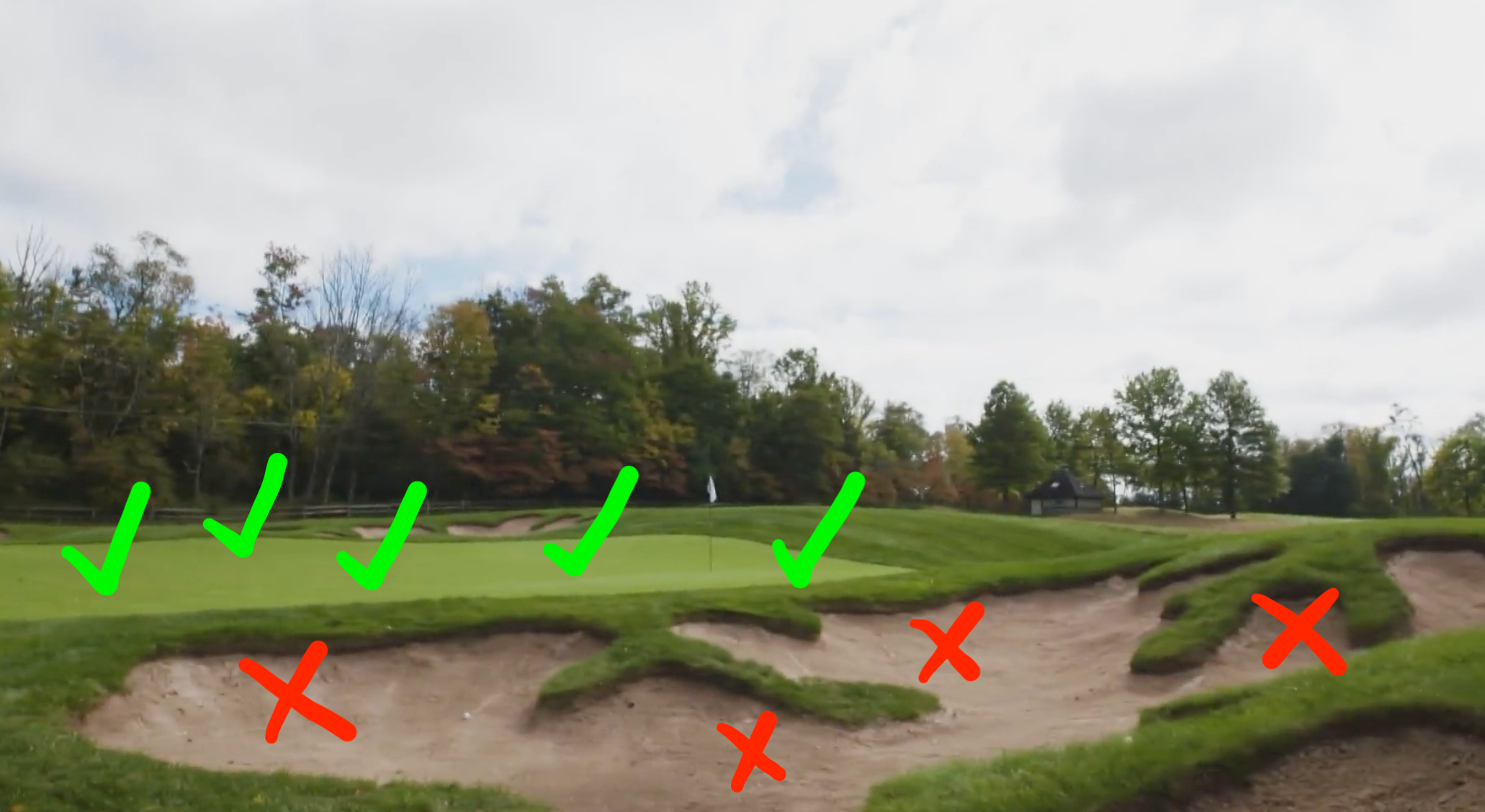
Bronte Law, pride of Stockport, England, isn’t the longest player on the LPGA Tour — she averages a tick under 250 yards per drive, or 121st among her peers — which means she must lean hard on her touch and guile. (You can watch her for yourself during the AIG Women’s Open, at Muirfield, this week.)
Those qualities are particularly useful when players are faced with one of the most daunting asks in golf: a flop shot over a scary hazard. Other tips can also help, which is why I was thrilled to recently get a flop-shot lesson from Bronte herself. With all the great advice she gave me, you might say she laid down the Law. (I wouldn’t say that, but you might.)
Anyway, to the lesson!
Site: The par-3 course at Hamilton Farm GC, in Gladstone, N.J.
Conditions: Overcast, comfortable, light breeze
Lie: Juicy rough
Shot: 20 yards all carry over a sprawling bunker to a short-side pin
My nerves: On edge!
Golf is best played with minimal thought, especially when executing specialty shots around the green. Fill your brain with a list of dos and don’ts as you stand over the ball and you’re destined for a chunk, top, blade, maybe even an outright whiff. That in mind, Bronte gave me four simple keys:
1. Let loft be your friend
First things first: your club choice. Bronte typically employs her 60-degree wedge — after all, the goal is to get your ball up quickly and land it softly, and no club in your bag is better equipped for those tasks. For shots that require even more lift, further open the face of your wedge at address.
“I angle the shaft backward to ensure I’ll get the loft I need to get the ball to stop quickly,” Bronte says, adding that she also likes to play the ball in the back of her stance.
Angle the shaft backward for extra loft.
GOLF.com
2. Quiet your body — and your swing
Don’t dip or scoop or try to lift the ball into the air. You want to keep your core relatively still — and, again, let your club do the work. Excess movement can lead to crummy contact. So can inconsistent clubhead speed. “The speed on your takeaway and follow-through should be the same,” Bronte says. “You don’t want any deceleration or acceleration.”
Ah, yes, dreaded decel! You must commit to the shot or you’re liable to hit the ball 2 yards instead of 20. Which leads us to…
3. Don’t leave the ball short
The last thing you want to face after one flop shot is another flop shot. So don’t get too cute, and make sure you get the ball to the green. Even a long bending putt is more than likely a better option than having to replay the nervy shot you should hit — or tried to hit.

If you’re going to miss, miss smart!
GOLF.com
4. Read your lie
Not all lies are created equal. For example, a 20-yard flop shot off the fairway might well require a shorter takeaway/less speed than a 20-yard flop shot from the rough. “Certain lies prevent you from playing certain shots,” Bronte says. “In deeper rough, you can be more aggressive than on a tight lie.”
For much more from Bronte, check out the video above.









